Modern DIY Peel and Stick Kitchen Backsplash Guide 2025
Imagine upgrading your entire kitchen in a single weekend. No grout, no dust, no contractor bills. This isn't a far-off dream; it's the new reality for savvy homeowners. In fact, the demand is so high that industry analysis shows DIY backsplash sales rose an estimated 40% in 2024 alone. This surge isn't just about saving money; it's about accessible, high-impact design.
An outdated or uninspired kitchen can make the whole home feel tired. The thought of a traditional renovation—with its high costs, mess, and long timeline—is enough to stop most projects before they start. This is where modern peel and stick backsplashes come in, offering a revolutionary combination of ease, affordability, and sophisticated design.
What is the best way to modernize a kitchen backsplash in 2025?
The best way to modernize a kitchen backsplash in 2025 is by using high-quality peel and stick tiles. These self-adhesive solutions offer a fast, affordable, and durable alternative to traditional tiling. Top options include heat-resistant metal tiles for behind stoves, waterproof vinyl for sink areas, and eco-friendly materials for a sustainable choice.
This guide is your expert source for navigating this exciting trend. We'll explore the top 2025 styles, compare the best materials for durability, and walk you through a flawless installation. Let’s explore why peel and stick backsplashes are redefining kitchen design in 2025.
Why are peel and stick backsplashes dominating 2025 kitchen trends?
The Question: Feeling stuck with a dated kitchen but overwhelmed by the thought of a full-scale renovation?
The Promise: This section explains why peel and stick tiles are the smart, stylish, and practical solution you've been looking for.
The explosive growth of peel and stick backsplashes is rooted in a major shift in homeowner priorities. Today, we value speed, cost-efficiency, and design flexibility more than ever. These self-adhesive tiles deliver on all three fronts, making them a clear winner for 2025 and beyond.
What was once seen as a temporary fix is now a durable, long-term solution. Advances in adhesive technology and material science mean that premium peel and stick products can last for years, resisting heat, humidity, and daily wear with impressive resilience. They empower homeowners to act as their own designers, achieving a professional look without the professional price tag.
The most compelling argument comes from comparing them directly to traditional tile. As experts in home renovation, we see clients grapple with this choice often. The difference in project scope is enormous.
Traditional vs. Peel and Stick: A 2025 Comparison
| Feature | Traditional Tile Backsplash | Modern Peel and Stick Backsplash |
|---|---|---|
| Installation Time | 2-5 days (including drying/curing) | 2-6 hours |
| Average Cost (30 sq. ft.) | $900 - $2,500 (with labor) | $150 - $500 (DIY) |
| Required Skill Level | Intermediate to Advanced | Beginner |
| Mess & Disruption | High (demolition, thin-set, grout) | Minimal (surface cleaning) |
| Removability | Difficult and destructive | Possible with heat (hairdryer) |
This data makes the choice clear for many. You're not just saving money; you're reclaiming your weekend and avoiding a major disruption to your home life. It's a high-impact upgrade with a low-impact process. To help you decide between different materials and methods, we've broken everything down in our comprehensive What Kitchen Backsplash Tile Guide, which compares peel-and-stick solutions against traditional installations for style, convenience, and budget.

How do I choose the best peel and stick backsplash for my kitchen walls?
The Question: Overwhelmed by all the material and style options available and worried about making the wrong choice?
The Promise: Here, we'll break down the best materials and help you find a style that perfectly matches your modern kitchen aesthetic.
Selecting the right material is the most critical decision you'll make. It affects not only the look but also the durability and performance of your new backsplash. Forget the flimsy, plastic-looking options of the past. The 2025 market is filled with sophisticated, high-performance choices.
Vinyl Tiles
Vinyl is the most popular and versatile material. Modern luxury vinyl tiles (LVT) are thick, textured, and feature hyper-realistic 3D graphics that convincingly mimic ceramic, stone, and even wood. They are waterproof, easy to clean, and extremely durable, making them a fantastic all-around choice.
Metal and Metal-Look Tiles
For a sleek, industrial, or professional-grade kitchen look, metal tiles are unmatched. Often made with an aluminum composite surface, these tiles are naturally heat-resistant and easy to wipe down. They come in finishes like brushed stainless steel, copper, and matte black, adding a touch of modern sophistication.
Gel and Resin Tiles
These tiles have a 3D gel-like surface (often called epoxy) that gives them the glossy, dimensional look of real glass or ceramic tile. The "puffy" texture creates beautiful light reflections and adds depth to your walls. They are a great choice for adding a bit of sparkle and are very easy to cut and install.
Natural and Eco-Friendly Materials
The demand for sustainable design has brought incredible innovation. You can now find peel and stick tiles made from recycled materials, natural stone veneers, and even cork. These options provide unique textures and peace of mind for the eco-conscious homeowner.
A common misconception is that all peel and stick tiles look "cheap." In our experience, the issue isn't the product category but the product *quality*. Investing in a premium brand with thicker tiles and stronger adhesive makes all the difference, creating a finish that is often indistinguishable from traditional materials.
For a comprehensive review of top-performing options, the go-to resource is our data-backed roundup.
Recommendation Anchor:
To see a side-by-side comparison of durability, price, and style, our guide to the Best Peel and Stick Tiles for Kitchen Backsplash 2025 is the definitive starting point for any DIY project.

What is the step-by-step process for installing a peel and stick backsplash?
The Question: Nervous about messing up the installation and ending up with crooked tiles or a peeling mess?
The Promise: Follow this simple, professional-approved guide to ensure a flawless installation from start to finish.
The beauty of a DIY peel and stick backsplash lies in its simplicity. Think of it less like construction and more like a precision craft project. A successful outcome is all about patient preparation and careful alignment. A small kitchen project can genuinely be completed in an afternoon.
Surface Preparation (The Most Important Step)
Do not skip this. The adhesive needs a clean, smooth, and dry surface to create a permanent bond. Clean your wall with a degreasing cleaner (a 50/50 mix of isopropyl alcohol and water works well) to remove any grease or residue. Let the wall dry completely for at least an hour.
Measure and Plan
Measure the total area to confirm you have enough tiles (always buy 10% extra for cuts and mistakes). Plan your starting point. Most pros start in the most visible corner and work their way out. Lay a few tiles on the counter to visualize the pattern and overlap.
Pro-Tip: Before peeling any backing, do a "dry fit." Hold a full sheet against the wall to see how it lines up with outlets, corners, and edges. This is your chance to plan your cuts without any pressure.
Draw a Level Guideline
Your countertops or cabinets may not be perfectly level. Use a level and a pencil to draw a straight horizontal line where the top or bottom of your first row of tiles will sit. This guideline is your source of truth and will keep the entire project straight.
Peel, Align, and Stick
Peel back only the top few inches of the backing paper. Align the tile with your guideline, not the countertop. Once it's perfectly positioned, press the exposed adhesive firmly to the wall. Then, slowly peel the rest of the backing away while smoothing the tile down from the top to the bottom.
Overlap and Apply Pressure
Most peel and stick tiles are designed with a small overlap area to create a seamless, waterproof seal. Make sure you align this overlap precisely with the previous tile. Once a sheet is in place, use a plastic smoother or a small roller to apply firm, even pressure across the entire surface. This activates the pressure-sensitive adhesive.
Cut and Finish
For cuts around outlets or windows, create a paper template of the tile and trim it to fit the obstacle. Trace this template onto your tile and cut carefully with a sharp utility knife and a straightedge. Once all tiles are installed, press firmly over all seams one last time.
For an even more detailed walkthrough and tips for handling tricky corners, our complete guide on how to install peel and stick tiles offers advanced techniques for a professional finish.
Can you safely use a peel and stick backsplash behind a stove?
The Question: Worried that a peel and stick backsplash will melt, warp, or even be a fire hazard behind a hot stove or near a sink?
The Promise: This section clarifies which materials are safe and what precautions you must take for use in high-heat and moisture zones.
This is one of the most common and important questions we get from homeowners. The answer is yes, you can absolutely use peel and stick tiles behind a stove and sink, but you *must* choose the right material and follow specific safety guidelines.
Heat Resistance: Behind the Stove
The key is to look for materials specifically rated for heat resistance.
- ✓Best Choice: Metal Tiles. Tiles with a real aluminum or stainless steel surface are the top performers. Metal dissipates heat effectively, preventing the material from scorching or warping.
- ✓Good Choice: Premium Vinyl & Stone Composite. Many high-quality vinyl and stone composite tiles are rated to withstand the ambient heat from a stovetop. Always check the manufacturer's specifications for temperature limits.
A critical rule of thumb is clearance. As a safety standard, we recommend ensuring there is at least 6-8 inches of space between the back of your stove and the wall. For gas stoves with open flames, this distance is non-negotiable. With induction or electric cooktops, you have a bit more flexibility, but checking the material specs is still vital.
Moisture Resistance: Around the Sink
Nearly all premium peel and stick tiles made from vinyl, metal, or gel are 100% waterproof. The real vulnerability isn't the tile surface but the seams. This is why the installation process is so important. Ensuring a clean surface and a tight, overlapping seam creates a watertight barrier that prevents moisture from getting behind the tiles.
Some homeowners add a thin bead of clear silicone caulk where the backsplash meets the countertop for extra insurance. While not always necessary with high-quality tiles, it's a simple step that guarantees a perfect seal in the wettest area of your kitchen.
Confident? Find Heat & Water-Resistant Tiles NowAre there eco-friendly and sustainable peel and stick options?
The Question: Want to update your kitchen but feel concerned about the environmental impact of using synthetic materials?
The Promise: Discover a new generation of beautiful, sustainable peel and stick backsplashes made from recycled and non-toxic materials.
The push for healthier, more sustainable homes has officially reached the peel and stick market. In response to growing consumer demand—with reports showing over 60% of renovators now prioritizing eco-friendly products—manufacturers have developed some incredible options.
Recycled and Non-Toxic Materials
Look for products made from recycled PET (the same plastic used in water bottles) or other post-consumer materials. These tiles divert waste from landfills and often have a beautiful, high-end finish. Another emerging category is natural stone veneer, which uses incredibly thin slices of real slate or quartzite, reducing quarrying impact.
Low-VOC Adhesives
One of the biggest concerns with any building material is indoor air quality. Volatile Organic Compounds (VOCs) are chemicals that can be released into the air from adhesives and plastics. Reputable brands now use low-VOC or zero-VOC adhesives, making their products much safer for your home environment. Always check the product details for certifications like Greenguard Gold.
Lifecycle Considerations
Sustainability isn't just about the material; it's also about the product's entire life. The light weight of peel and stick tiles reduces the carbon footprint associated with shipping. Furthermore, because they can often be installed over existing surfaces, they eliminate the landfill waste that comes from demolition. When it's time to change, many can be removed without harsh chemicals.

How do I maintain peel and stick backsplashes, and what mistakes should I avoid?
The Question: How can I ensure my new backsplash lasts as long as possible and continues to look great for years to come?
The Promise: Learn the simple maintenance secrets and the common installation mistakes to avoid for maximum longevity and durability.
A common myth is that peel and stick backsplashes are a temporary, flimsy solution. With proper installation and basic care, a high-quality product can easily last 5-10 years or even longer. We have clients whose backsplashes have looked pristine for over a decade in busy family kitchens.
Simple Cleaning and Maintenance
The secret to longevity is gentle cleaning. Never use abrasive scrubbers, harsh chemicals, or bleach, as these can dull the finish and damage the surface.
- ✓The Perfect Cleaner: A simple solution of warm water with a few drops of mild dish soap is all you need.
- ✓The Right Tool: Use a soft cloth or sponge. For grease splatters behind the stove, let the soapy water sit for a minute before gently wiping clean.

Common Mistakes to Avoid
In our experience, almost all "product failures" are actually installation errors. Avoid these common pitfalls:
- 1.Skipping Surface Prep: Applying tiles to a greasy, dusty, or damp wall is the number one cause of peeling. The wall must be perfectly clean and dry.
- 2.Ignoring the Guideline: Trusting your eye instead of a level will result in a crooked pattern that becomes more obvious with each tile you add.
- 3.Applying to Fresh Paint: Fresh paint needs time to cure, typically 2-3 weeks. Applying tiles too soon can cause the adhesive to fail as the paint off-gases.
- 4.Using on Textured Walls: Most peel and stick tiles require a smooth surface. If you have textured walls (like an "orange peel" finish), you must sand them smooth and prime before installation.
Avoiding these simple mistakes is the key to a professional-looking, long-lasting result. For more tips, including renter-friendly hacks and the latest design trends, explore our guide to DIY Peel and Stick Tiles: Easy Kitchen Upgrade.
Find Your Perfect Backsplash Style!
What's the primary goal for your kitchen update?
What are some modern design ideas for a kitchen makeover?
The Question: Need some inspiration to see how these tiles can create a truly high-end, designer look in a real kitchen?
The Promise: Explore stunning before-and-after transformations and learn how to combine backsplash tiles with your cabinets and countertops.
The best part of using peel and stick tiles is the creative freedom they provide. You can achieve designer aesthetics that are trending for 2025 without the hefty price tag. The key is to think about the backsplash as a core component of your overall kitchen design palette.
Before & After: The Power of Transformation
Imagine a small kitchen with dated, beige laminate countertops and plain white walls. It feels cramped and uninspired. Now, picture that same kitchen after a weekend project: a new backsplash of glossy, deep green subway tiles has been installed. The color adds depth and personality, making the whole space feel intentional and custom-designed. This is the kind of high-impact change that is possible. For real-life examples, our gallery of kitchen transformations using peel and stick tiles showcases some dramatic results.
Pairing with Cabinets and Countertops
- ✓For White Cabinets: You have endless possibilities. A marble-effect tile with grey veining creates a classic, sophisticated look. For a bolder statement, try a patterned tile in black and white or a pop of color.
- ✓For Wood Cabinets: To complement the warmth of wood, consider tiles in earthy tones, creamy whites, or even a sleek matte black for dramatic contrast.
- ✓For Dark Cabinets (Black, Navy): A bright white subway tile (classic or picket-shaped) can provide a stunning, clean contrast. Alternatively, a brass or copper-toned metal tile can add warmth and a touch of luxury.
Unleash Your Creativity
Don't be afraid to think outside the box. You can use two different tile colors to create a feature area behind the stove or mix different shapes to create a custom pattern. The low cost and easy installation make it a low-risk way to experiment with bold design ideas. For more inspiration, exploring trendy kitchen wall ideas for 2025 can spark your next project.
Where can I find budget-friendly peel and stick backsplashes?
The Question: Love the idea of a kitchen update but need to stick to a tight budget?
The Promise: We'll show you how to get a high-end look for less, including a cost breakdown and the best places to shop.
One of the greatest appeals of a DIY backsplash is its affordability. You can achieve a dramatic kitchen transformation for a fraction of the cost of a professional renovation. Getting a great price doesn't mean you have to sacrifice quality; it's about shopping smart.
Top Affordable Product Lines
While premium brands offer superior durability, many budget-friendly lines from major home improvement retailers deliver excellent value. Look for brands that have a large number of positive reviews and customer-submitted photos. These can give you a realistic idea of the finished look.
Best Places to Shop
You can find a wide selection of peel and stick tiles at big-box stores like Home Depot and Lowe's, as well as online marketplaces like Amazon and Wayfair. For more curated and unique designs, specialty online retailers like Stickwoll often provide exclusive styles and patterns you won't find elsewhere.
Pro-Tip: Always order a single tile as a sample before committing to a full project. This allows you to see the color, texture, and thickness in your own kitchen's lighting. The small cost of a sample can save you from a major purchasing mistake.
Cost Breakdown: DIY vs. Professional Install
Let's look at a typical 30-square-foot backsplash area (a common size for a small to medium kitchen):
| Cost Item | DIY Peel and Stick | Professional Traditional Tile |
|---|---|---|
| Materials | $150 - $500 | $300 - $800 |
| Labor | $0 | $600 - $1,500+ |
| Tools/Supplies | ~$30 (knife, level) | ~$100+ (saw, trowel, etc.) |
| Total | $180 - $530 | $1,000 - $2,400+ |
The savings are undeniable. For the cost of a single night out, you can completely change the look and feel of your kitchen. If you're ready to start your project, our DIY Peel and Stick Kitchen guide is packed with more tips for a successful and budget-friendly upgrade.
Your Weekend Kitchen Transformation Awaits
As we've seen, the advantages of modern peel and stick backsplashes are clear. They offer an unmatched combination of design flexibility, affordability, and ease of installation, aligning perfectly with the demands of 2025 home design. You no longer have to live with a kitchen that doesn't inspire you.
With heat-resistant materials safe for stoves, waterproof options for sinks, and a growing number of sustainable choices, there is a perfect solution for every style and every budget. Armed with the expert tips in this guide, you are ready to begin your own DIY kitchen transformation.
To find the perfect starting point and spark your imagination, explore our curated list of Peel Stick Backsplash Kitchen Ideas for 2025 or subscribe for the latest design trends and product launches delivered straight to your inbox.
Frequently Asked Questions
Can I install peel and stick backsplash over existing tiles?
Yes, in most cases, you can. The key is that the existing surface must be flat, clean, and non-porous. If your current tiles have deep grout lines, you may need to fill them with a thin layer of joint compound and sand it smooth to create an even surface for the new tiles to adhere to.
Is a peel and stick backsplash a good option for renters?
It's one of the best options for renters. Because they can be removed (usually with the help of a hairdryer to soften the adhesive), they offer a way to personalize your space without making permanent changes. Always check the product specifications, as some high-bond adhesives are considered semi-permanent.
What do I do if I install a tile crookedly?
Act quickly! Most adhesives are pressure-sensitive and allow for a brief window of repositioning. If you notice a mistake immediately, you can often gently peel the tile off and re-align it. If it has been pressed down firmly, try warming it with a hairdryer to soften the glue before carefully prying it off.
Do peel and stick backsplashes look cheap in person?
While this was a valid concern with older products, it's no longer the case with modern, high-quality tiles. Premium brands use 3D printing, realistic textures, and thicker materials (2-3mm) that create a convincing illusion of real tile. Ordering a sample is the best way to see the quality for yourself.

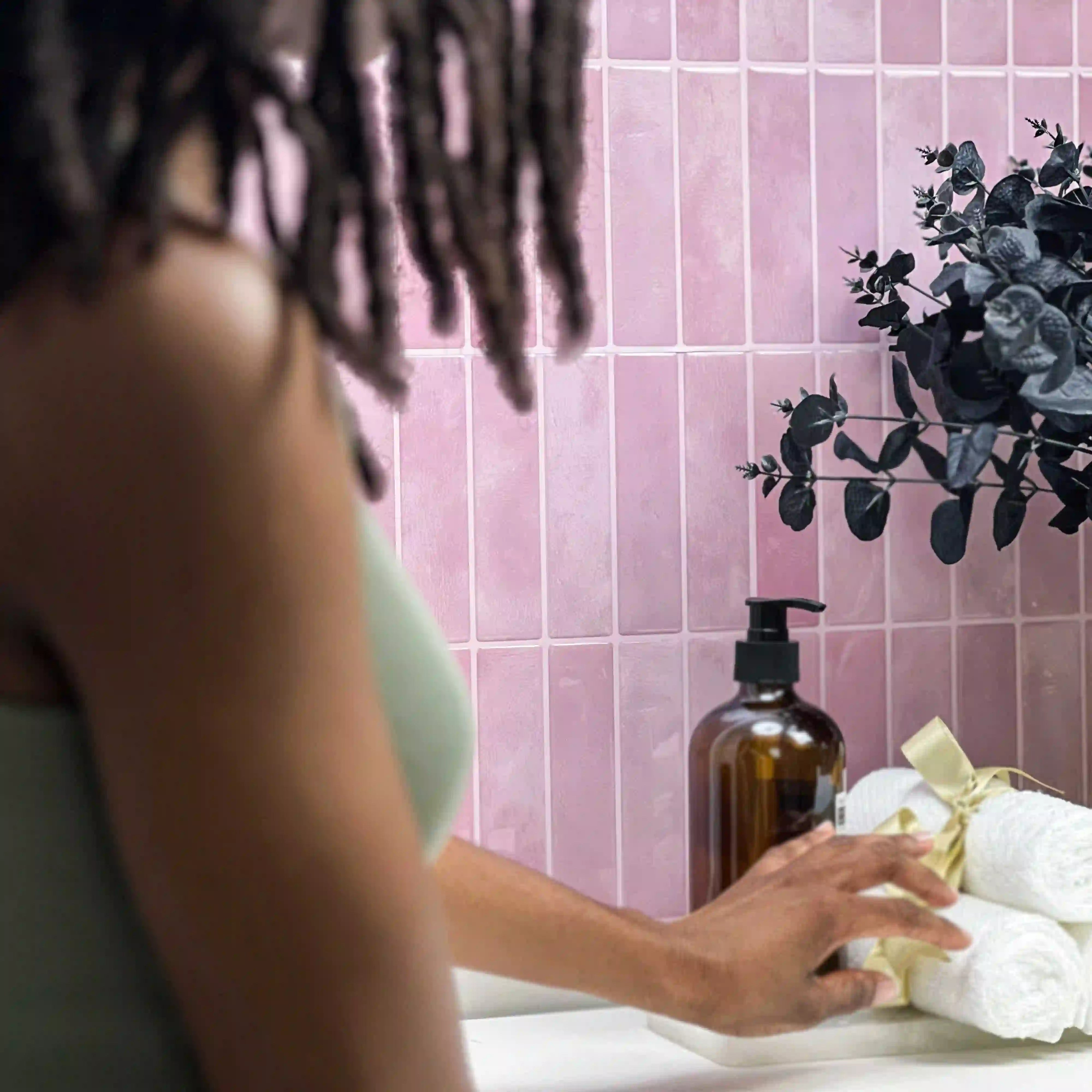
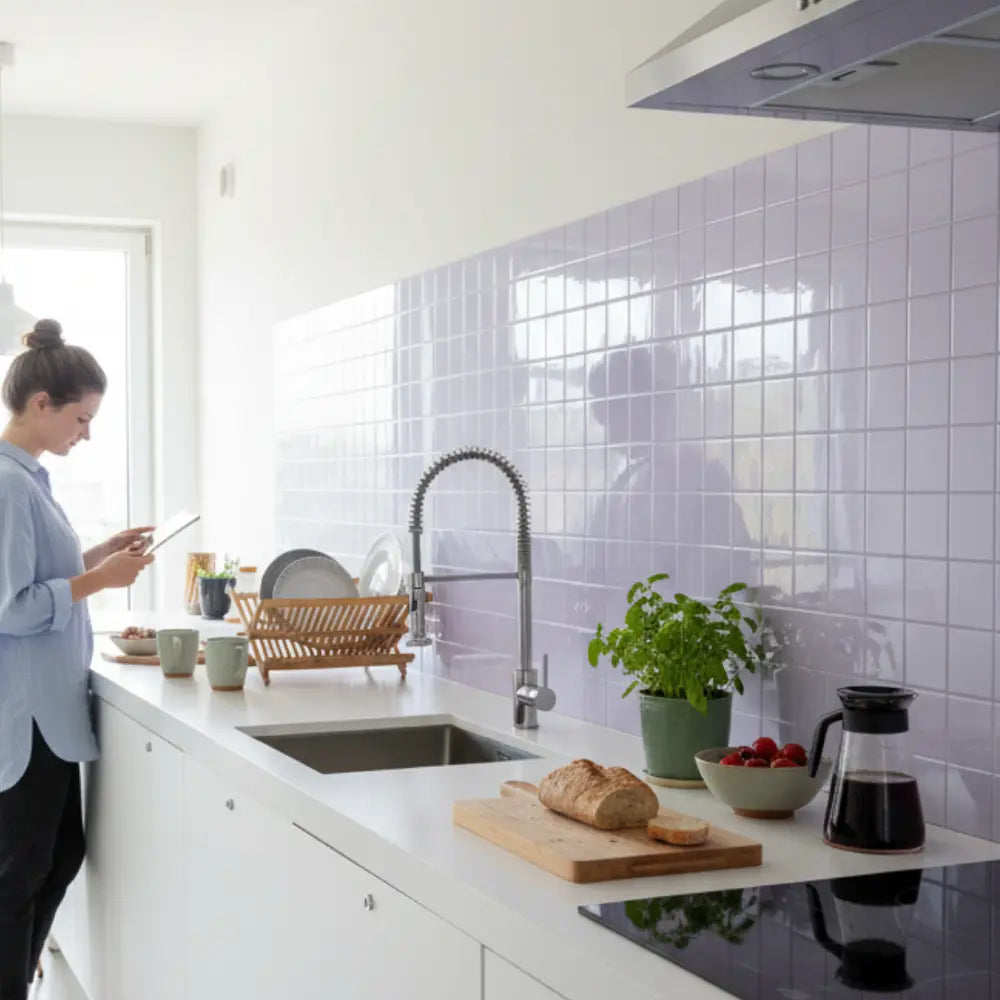
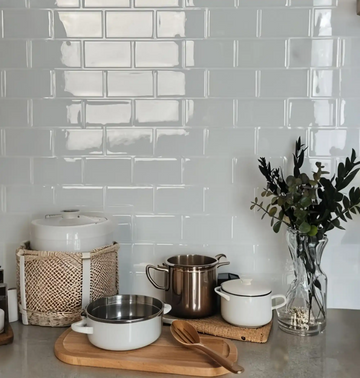
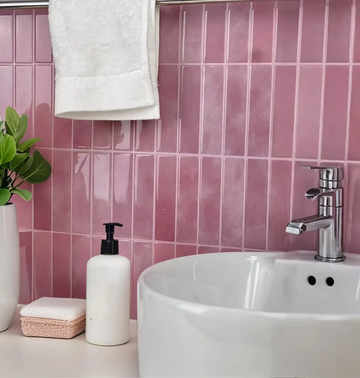
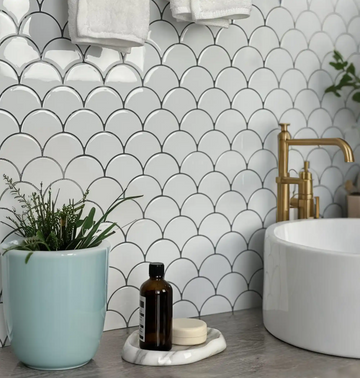
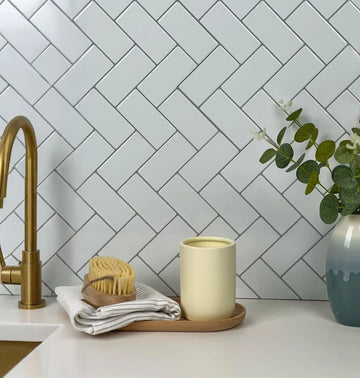



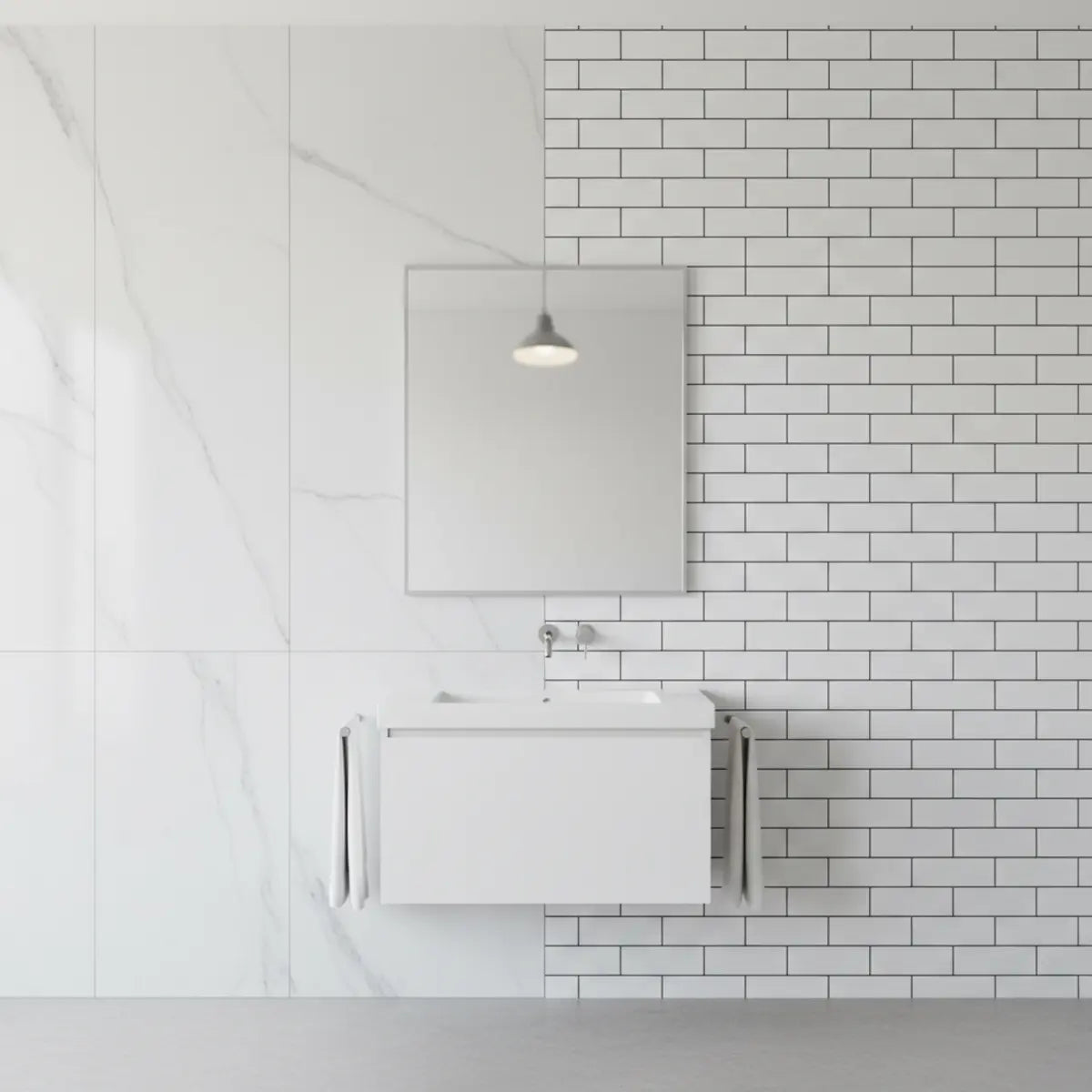
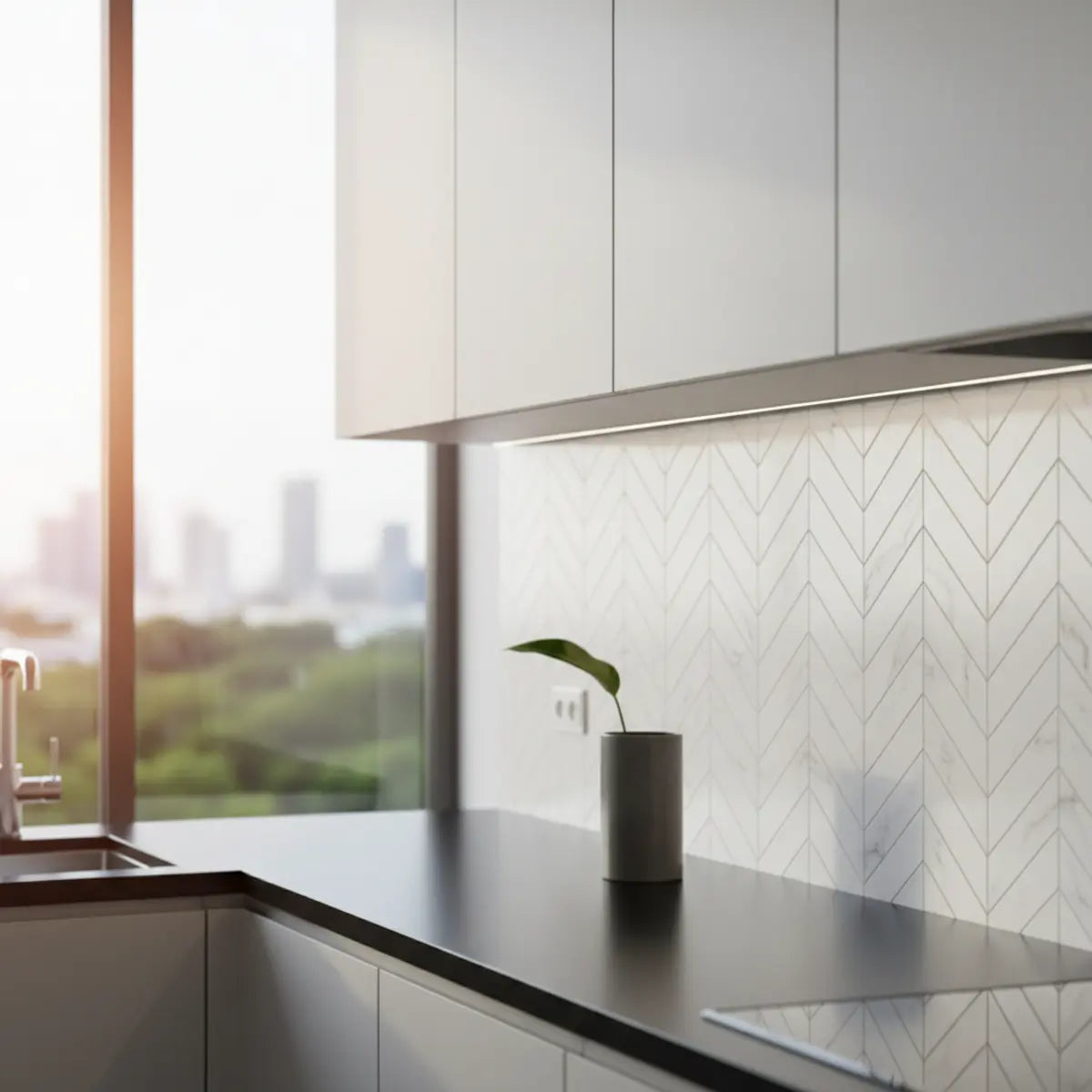
Hinterlasse einen Kommentar
Diese Website ist durch hCaptcha geschützt und es gelten die allgemeinen Geschäftsbedingungen und Datenschutzbestimmungen von hCaptcha.